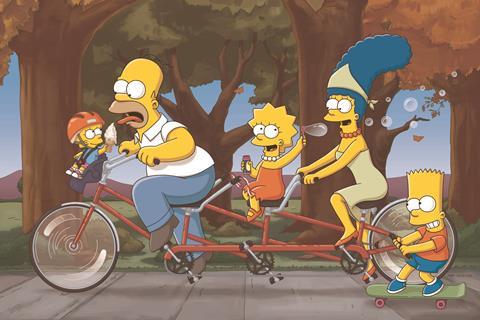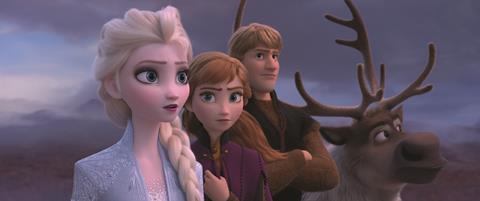The culmination of years of planning and billions of dollars of investment, Disney+ represents a major pivot by the Walt Disney Company towards the direct-to-consumer, OTT market. Can the House of Mouse pull it off?

If any of the new wave of streamers is going to succeed, the smart money is on the Walt Disney Company.
The House of Mouse goes live today with its long-awaited streaming service Disney+ in the US and Canada. It will also launch in Australia and New Zealand this month before debuting in spring 2020 in the UK, Germany, France, Italy and Spain.
“We’re making a huge statement about the future of media and entertainment and our continued ability to thrive in this new era,” chief executive Bob Iger said on an earnings call last week.
- Read more: Apple bites into the streaming market
The launch represents the culmination of more than two years of planning and billions of dollars of investment by Disney as it pivots to the direct-to-consumer, OTT market to challenge insurgents like Netflix and Amazon.
The launch comes in the wake of acquisitions and organic growth that has made Disney home to brands such as Pixar, Lucasfilm’s Star Wars, and Marvel. The desire to bolster its OTT content offer was one of the key reasons for Disney’s $71.3bn deal for 21st Century Fox, which included 20th Century Fox, National Geographic, a large stake in streaming service Hulu, and TV channel FX - giving Disney exclusive rights to stream The Simpsons, among other things.
Disney has also spent heavily on the technology for its new streaming service. In 2017, it invested $1.58bn - in addition to $1bn it had already invested - to gain control of BamTech, a US streaming media specialist (now called Disney Streaming Services) that previously helped US broadcaster HBO set up its streaming services.
The entertainment powerhouse also began pulling back its content from competitors such as Netflix two years ago in preparation for launching its own direct-to-consumer offering.
“If any studio is going to succeed in this transformation [to direct-to-consumer], it must be the Walt Disney Company, the only one reaching 100 million households today with its triad of video, consumer products and theme parks,” says Enders Analysis senior analyst Tom Harrington. “Disney+ will both leverage and further cement Disney’s relationships with customers.”
Disney says it expects 60-90 million subscribers by 2024, a modest target given that Netflix currently has 158 million subscribers and Amazon Prime Video over 100 million. Of these, some 20-30m are expected to be in the US.
“If any studio is going to succeed in this transformation [to direct-to-consumer], it must be the Walt Disney Company.” Tom Harrington, Enders Analysis
Analysts, however, believe Disney will exceed this target. Digital TV Research said this week that it expected Disney to reach 101 million subscribers by 2025, in third place behind Netflix and Amazon.
Disney+ costs $6.99 monthly, an aggressive price that undercuts Netflix (which charges $13 a month for its most common plan) and AT&T’s forthcoming HBO Max ($15 a month, when it launches in May). Disney+ is also just $2 more than Apple TV +, which launched on November 1 with a very limited programming offer.
Disney+ is also available as a bundle, with ESPN+ and Hulu, for $12.99 monthly. New customers to Verizon’s cable TV, broadband or cellular service can get Disney+ free for one year, too.
Reflecting on the Disney+ price point, Rod Henwood, chief strategy officer at The Night Manager producer The Ink Factory says: “What’s interesting is their attempt to compete as a late entrant on price, on the basis that they can hurt Netflix twice: once by capturing their customers; the second time by forcing them to reduce their margins to their existing customers, at a time when content is becoming more and more expensive.”
Disney+ is available on most of the usual streaming devices, including Roku, Amazon Fire TV, Apple TV and Google Chromecast. Smart TVs from LG and Samsung, as well as Sony TVs with built-in Android TV operating system, will also connect to Disney+, and so will iOS and Android smartphones and other portable devices.
Its content offer is perhaps the most impressive aspect of the service. At launch, Disney+ is providing access to more than 500 films and 7,500 episodes of library TV content, including 30 seasons of The Simpsons.
“We’re making a huge statement about the future of media and entertainment and our continued ability to thrive in this new era.” Bob Iger, Walt Disney Company
At launch, Disney+ has 10 new, original TV series and movies exclusive to the service including The Mandalorian, a live-action Star Wars spin-off; Lady and the Tramp, a live-action movie reboot of the 1955 animated classic; and High School Musical: The Musical: The Series.
Reviews have, on the whole, been mixed but tending towards favourable. Its most anticipated series, The Mandalorian, is “action-packed, predictable, entertaining” judged The LA Times. CNN called The Lady and the Tramp “respectable if uninspired”, while USA Today said the High School Musical reboot was “nostalgia done right”.

Just like Apple+, subscribers won’t able to binge on multiple episodes of these new series. Instead, new episodes will drop weekly, in a bid to draw out the value of the programming and to encourage simultaneous viewing to garner buzz.
All movies produced by Disney from 2019 and beyond – such as Frozen 2 and Star Wars: The Rise of Skywalker – will air exclusively on Disney+ after their theatrical and home video runs.
Then, of course, there are the films and TV series from Disney’s library. These include animated classics such as Bambi, The Jungle Book, Finding Nemo, Frozen, Lady and the Tramp, The Little Mermaid, The Incredibles, and Toy Story.
There’s also the entire original Star Wars saga (except for Star Wars: The Last Jedi and Solo: A Star Wars Story which remain on Netflix for now, due to earlier deals.)
Marvel movies such as Iron Man, Thor: The Dark World, Avengers: Endgame, and Captain Marvel are also available. (A few Marvel films such as Avengers: Infinity War also remain on Netflix until their deals expire, but all Marvel and Star Wars films will eventually come to Disney+.)

However, Disney+ will not show R-Rated films. “There will be nothing on Disney+ that’s not branded or family-friendly,” Kevin Mayer, the chairman of Disney’s direct to consumer division, said recently.
Instead, Disney is positioning Hulu as the adult streaming alternative to Disney+, and it will likely be the home, Mayer says, for R-rated content such as the Deadpool films.
While analysts agree that Disney’s content offer is unrivalled, they caution that it needs to be careful not to be perceived as a service for young kids and their parents – thereby limiting its potential reach. “Internationally, just like the US, the appeal of Disney+ will be more niche, centred on families with children, than that of Netflix, which has a wider appeal to adults,” says Enders Analysis’ Tom Harrington.
Disney+ is only offering its own content, unlike Netflix which has a wide variety of programming from many third party suppliers as well as its own originals.
Harrington also notes that Disney is spending far less on new, original content for its streaming service than Netflix. Disney is investing just over $1 billion on originals in 2020, ramping up to around $2.5 billion in 2024 (in 2018 Netflix spent close to $16 billion). By year five it is targeting more than 50 original series a year.
“A risk for Disney is that it is devoting a budget for originals on Disney+ at a fraction of the annual budget of Netflix. Disney is weak in series and also in content (other than films) that capture the interest of the older child and young adult,” says Harrington.
“The launch of Disney’s direct-to-consumer service will result in a significant loss of content licensing fees.” Ed Border, Ampere Analysis
He also questions Disney’s technology offer, something that is often overlooked because content is the central talking point about the Disney+ service. He notes that Netflix has spent a cumulative $5.4 billion on technology and development since it launched its streaming service in 2007, and argues that Netflix is “years ahead in online content distribution technology and data management.”
The launch of Disney+ also comes with some risk to Disney itself. It has previously made money by licencing its content to partners overseas, but will now be saving this programming for its own platform.
“The launch of Disney’s direct-to-consumer service will result in a significant loss of content licensing fees, which are currently derived from sales to third parties,” says Ampere Analysis research director Ed Border.
However, Ampere Analysis has crunched the numbers and believes that Disney will generate enough money from Disney+ to compensate for lost licencing revenues. Based on the launch price of $6.99, Ampere says Disney+ would generate between $4bn and $6bn annually if it hits its target of 60m-90m subscribers by the end of 2024.
Taking all of its content back in house will, of course, negatively affect its SVOD rivals. Both Amazon and Netflix have some 250-300 titles at risk once Disney+ launches, notes Ampere’s Border.
On balance, analysts think the financial risks for Disney+ look manageable. Now it’s time to see whether the subscribers will sign up for the service.
And Disney is doing its utmost to make sure they do. To market Disney+ to potential subscribers, Disney has reportedly launched “the biggest synergy campaign ever in the history of the Walt Disney Co,” according to the app’s content and marketing president, Ricky Strauss. Its promotional push spans theme parks, cruise lines, city buses, Disney retail stores and its TV networks, including ABC, ESPN, Freeform and FX.
Disney+ is, finally, up and running, and ready to do business.
2020: The year of the OTT
- 1
- 2
- 3
- 4
- 5
 Currently reading
Currently readingDisney bets big on the streaming revolution
- 6



















![Adeline Platform Help[64]](https://d3dh6of9cnaq4t.cloudfront.net/Pictures/100x67/0/6/9/30069_adelineplatformhelp64_996092_crop.png)









No comments yet